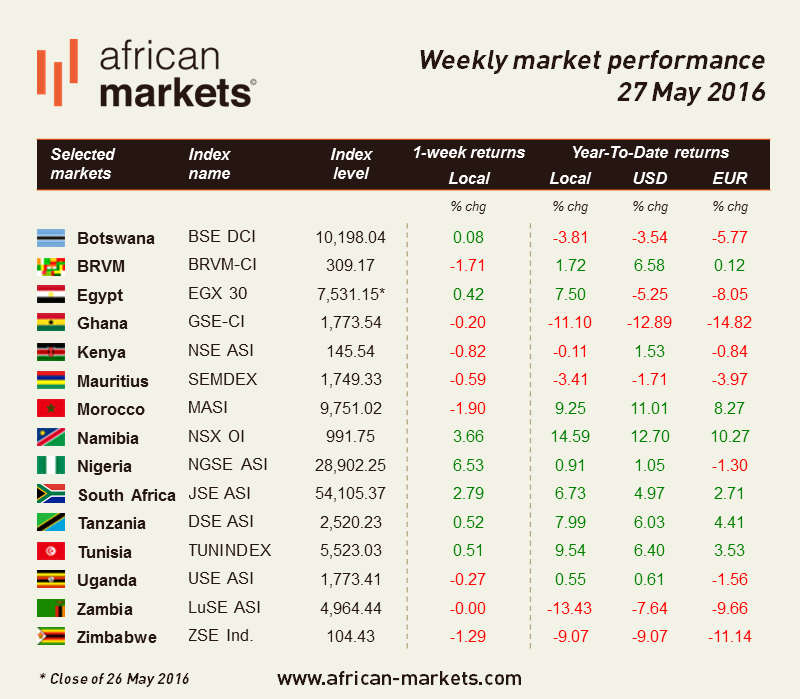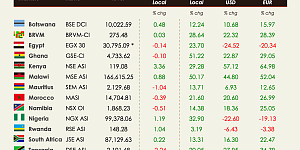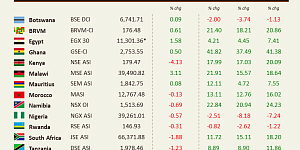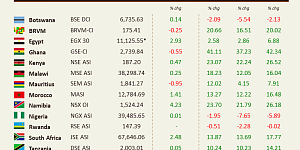Global markets were buoyant this week. World markets seem rather resilient as despite uninspiring first quarter corporate results, they seem more and more comfortable with the idea of higher interest rates in the US. And aren’t they right to be? Fed Chairwoman Janet Yellen stated Friday that an interest-rate increase may be coming in a matter of “months,” if the economy continues to improve. In short, the Chair seconded what some Fed Officials have been stating for the past weeks. Yellen has continually called for a gradual adjustment to rates conditional to its inflation target of 2%. US economic data have shown some improvement however the latest US inflation rate is 1.1% as published by the US government. As far as African markets are concerned, this means that one is far from returning to pre-crisis interest rates level yet and the fear could be overdone especially when focusing on actual facts and making abstractions of the emotional. On top of that, sentiment also received a huge boost as oil traded above $50 per barrel for the first time in seven months helped by the prices of precious metals such as gold and platinum which witnessed a turnaround.
This week top performer is the NGSE ASI which increased by 6.53 % supported by the sharp increase in oil price. JSE ASI finished up 2.79%. The benchmark was helped by global positive performance despite some negative news. Moody's rating agency lowered its outlook for the South African banking system to negative from stable on Friday, naming deteriorating operating conditions over the next 18 months, sending shares across the sector lower. Standard and Poor's and Fitch, which both have South Africa just one step above sub-investment grade, are due to announce their decisions on its rating next week. Fitch warned on Thursday that political quarrelling ahead of local elections in August posed a risk to the country's credit status. The rand weakened against the dollar on Friday as credit ratings downgrade fears weighed on sentiment. Moreover, Data from China showing profits of industrial firms slowed in April did not seem to bother the index despite further inhibiting sentiment toward commodity-exporting emerging economies.
In other news and worth mentioning, S&P Global Ratings lowered Mozambique’s credit assessment to CCC from B-, mentioning intensifying risk of default either from higher-than-expected service obligations or as a result of acceleration clauses in the government’s debt and the interruption of official foreign funding. Fitch Ratings also cut its assessment this week, indicating that a default of some kind was probable, while Moody’s Investors Service views the country as already in default. Mozambique says it owes foreign investors $9.85 billion. The question is: is it a read-across for the whole region? Africa is far from facing a debt crisis, debt levels across the region’s 54 countries average 17 to 18% of GDP which is well below levels seen in Europe where debt levels average 86% of GDP in 2015. The bull argument would be that there is still room for debt increase on African countries’ balance sheets. Nevertheless, soaring foreign-currency debt, weakening currencies have made repayments more costly in a context of slowing economic growth. Again and as often, it is an issue of a case by case analysis and making a general opinion out of some cases would not only miss the point but also be inaccurate. Although in the case of Mozambique the situation is tough, when looking at other countries, reforms, debt management and policies should among other elements also weigh on the balance.



















































